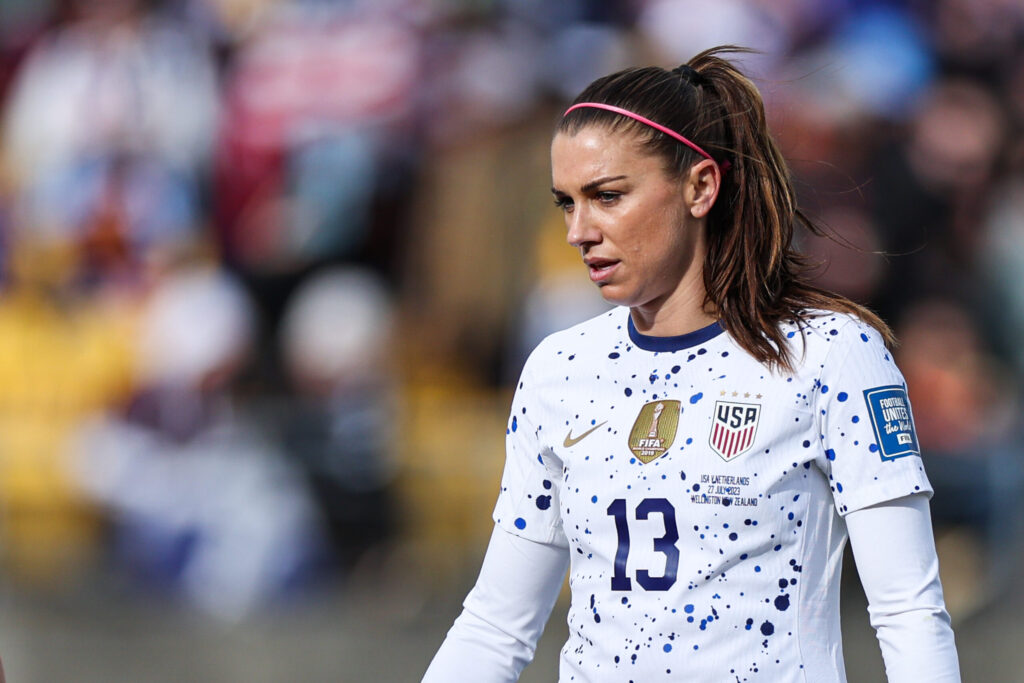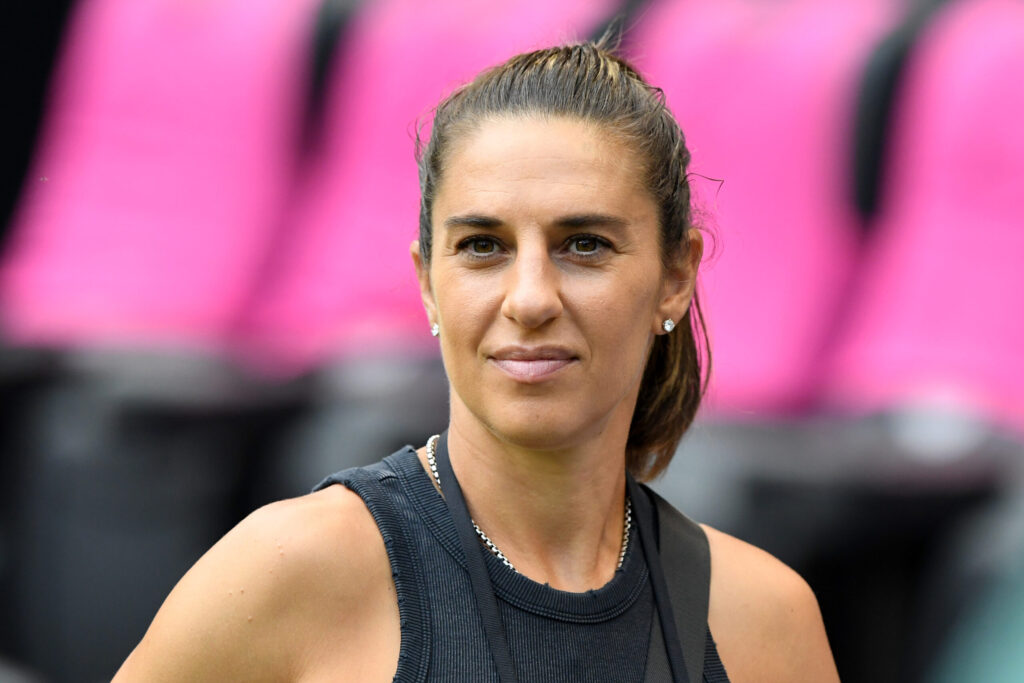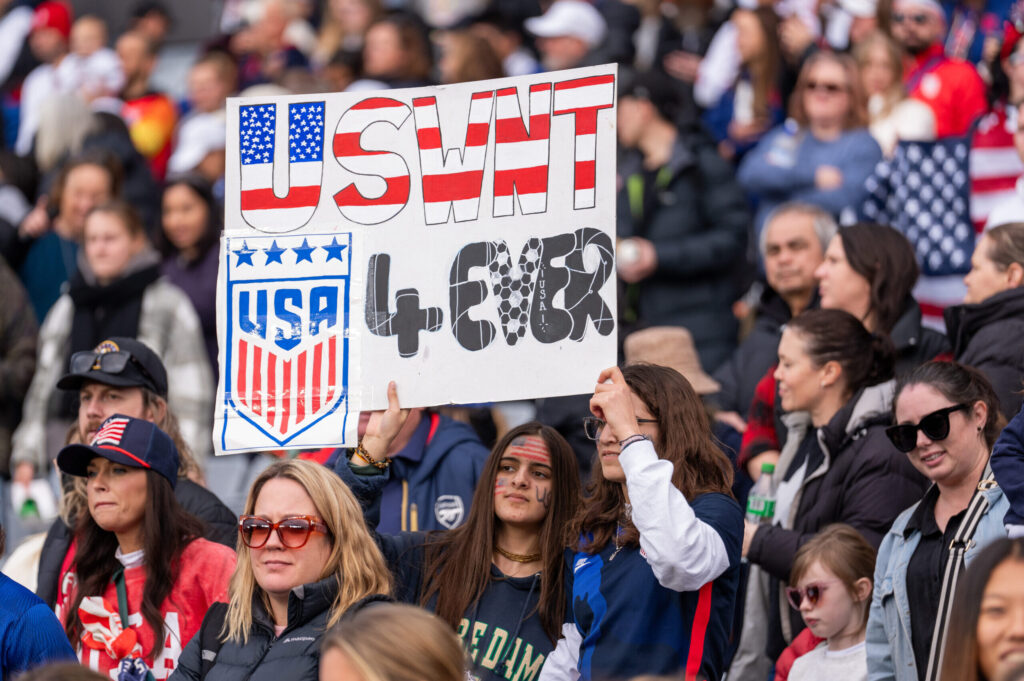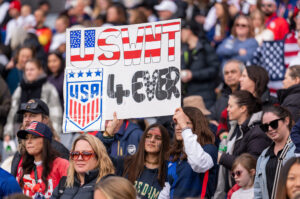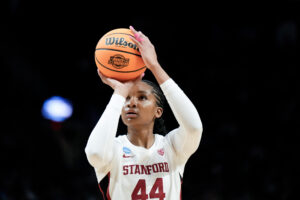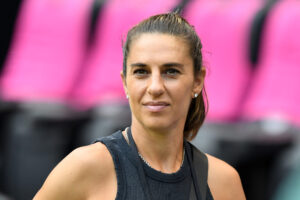After a relatively strong start against Vietnam, the U.S. women’s national team’s attack sputtered in a 1-1 draw against the Netherlands in their second match of the 2023 World Cup group stage.
The U.S. is playing in a front-three system with the intention of creating havoc on the wings and dangerous situations centrally. But against the Dutch, they were containable for too many minutes, raising concerns as tougher competition lurks in the knockout rounds.
Sophia Smith, Alex Morgan and Trinity Rodman are still building chemistry, after Mallory Swanson’s knee injury in April forced head coach Vlatko Andonovski to adjust his plans for the forward line. There have been bright spots, but a lack of consistency still plagues the relationship between the wings and the central position.
So, heading into their final group-stage match against Portugal, does the U.S. need to re-think its attack? And is the solution as simple as personnel changes, or would the team also benefit from an adjustment in tactics?
The promise of using space
Morgan in 2023 is not quite the same “Baby Horse” forward fans might remember from 2011 and 2015, though her role is not drastically different than it was in 2019. Andonovski has been very clear about how he wants the longtime veteran to play in 2023, using her positioning to occupy the attention of the other team’s center-backs and create space for the wingers around her. It’s a facet of her game she’s been honing in recent years with a commendable amount of success.
“It’s not that she’s not capable of scoring goals or getting behind crosses, but we can also see her playing balls to both Trinity and Soph, but also getting closest for them as well,” he said after the team’s draw with the Netherlands.
Morgan has consequently spent much of the first two games of the World Cup trying to fill spaces left by her teammates. She’ll drop into the USWNT’s struggling midfield to try to get touches on the ball, and drift wide when Smith takes point in the middle.
The difficulty Morgan had influencing the match against the Dutch for long stretches had less to do with her own ability, and more to do with the attack as a whole. Neither Smith nor Rodman had their best performances, over-relying on dribbling sequences and failing to beat the Dutch defenders to 50/50 balls. As a result, rather than Morgan pulling defenders in so the wingers could get wider, the front three began occupying the same spaces. The narrow approach didn’t provide the dynamism the U.S. needed off the ball to force the Netherlands’ back three into making risky choices.
The lack of lateral movement became a problem when the U.S. had to chase the game after falling behind in the first half, but those lanes also opened back up after the team drew level. Morgan had a golden opportunity to take the lead with a vintage run in behind, but Rodman’s entry pass came a little too late, ruling Morgan’s goal offside. Later in the match, Smith finally had 1v1 isolation opportunities on the left wing to get to the endline and send dangerous balls in across the Dutch penalty area.
Those second-half combinations showed more of what the U.S. attack can look like when all three players are consistently looking to find one another and combine.

The sacrifice of the high press
The USWNT’s commitment to having Morgan drift into deeper positions to aid the midfield gives up significant ground in the USWNT’s off-the-ball defending. Morgan isn’t being asked to sit on the hip of the last line of defense anymore, keeping them honest and pressing to try to force turnovers. The approach theoretically gives her more flexibility as a passing outlet to then redistribute to the wings, but it also gave the Netherlands free rein to progress the ball up the spine of the USWNT midfield, resulting in sequences like the one that led to the Netherlands’ opening goal.
After falling behind in the first half, the U.S. press seemed to disappear, with Smith, Morgan and Rodman all sitting in prospective passing lanes rather than trying to regain possession. To the Netherlands’ credit, their dynamic movement in the midfield opened those passing lanes back up, and the U.S. couldn’t hold onto the ball for long enough to mount a comeback. Morgan was also forced into runs to overcome positional deficiencies rather than set the Netherlands on their heels.
If the U.S. is going to concede possession in the midfield, the frontline has to seize their moments off turnovers and transition play. It was only after Lindsey Horan inserted a spark of life into the USWNT that the frontline began successfully re-winning the ball. While the shift in intensity was admirable, it still felt like individual changes rather than the system working as planned.
Embracing the ability to adjust
Andonovski does have the personnel to try something different, but it would require a greater willingness to adjust the attacking approach than he has shown thus far. If combining with Morgan is Plan A, then a quick Plan B has to be to insert Lynn Williams for her pressing abilities, or Alyssa Thompson so that Smith can shift into the No. 9 role. Against the Netherlands, Andonovski partially relieved Morgan by subbing on Rose Lavelle as the primary playmaker, but no other changes were made.
Part of what made Andonovski’s unwillingness to bring Williams in against the Netherlands so baffling is that her skill set seemed tailor-made for the game. She has the ability to run in behind defenses and, with fresh legs, force a center-back into making a key mistake. She wouldn’t be asked to execute the center forward position in the same way as Morgan, but the defending champions should consider that a strength and not a weakness.
The frontline of Smith, Morgan and Rodman seems to favor a positive or neutral game-state, where all three players feel they have the freedom to try different movements in search of a goal. Williams is the player you bring on if you need to chase a result. And if Smith is ultimately more comfortable in a narrow attacking system, the team will need a more experienced player who can get wide and overlap with the young star so as not to sacrifice width in key moments during a match.
Andonovski let an opportunity to explore his attacking depth pass him by against the Netherlands, in a gambit that never relinquished the winning goal. Tuesday’s match against Portugal might be the next-best opportunity.
Claire Watkins is a Staff Writer at Just Women’s Sports. Follow her on Twitter @ScoutRipley.
